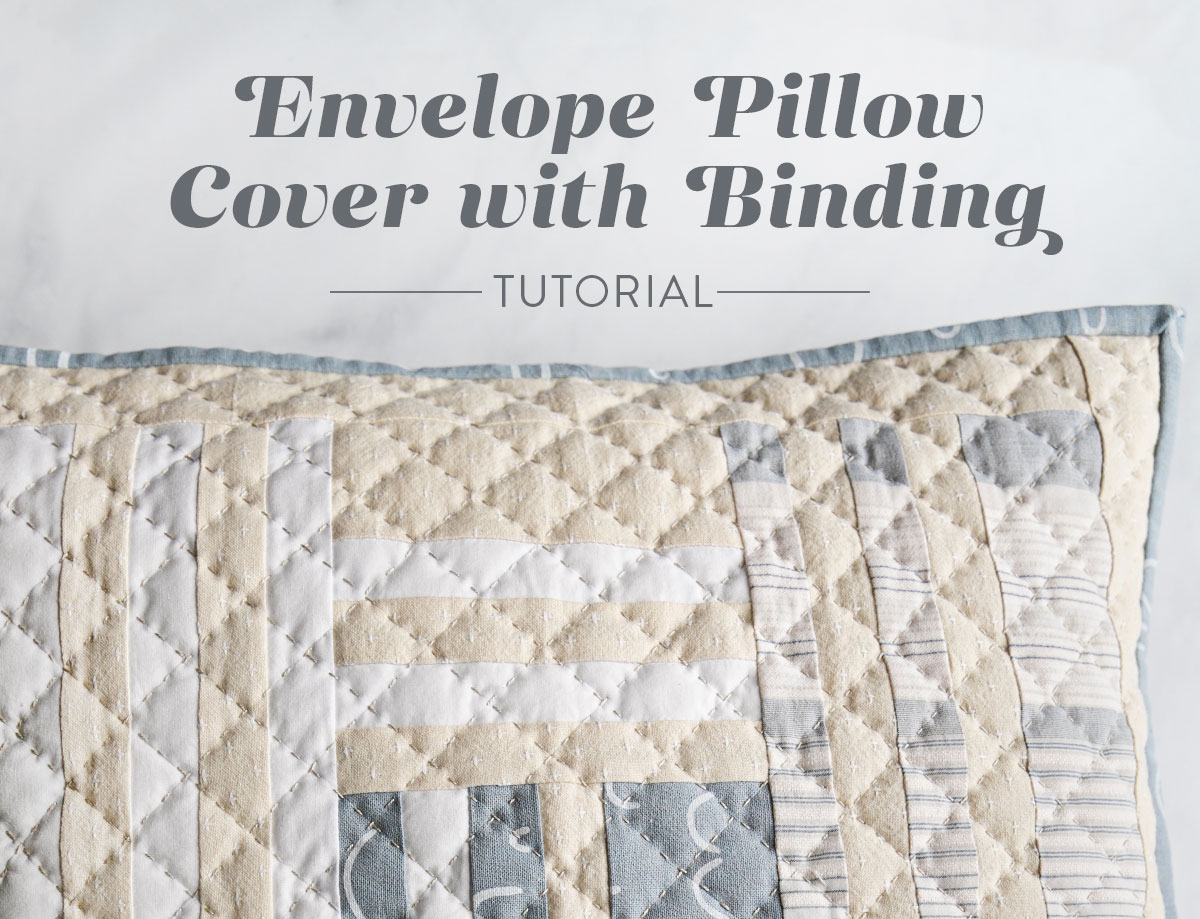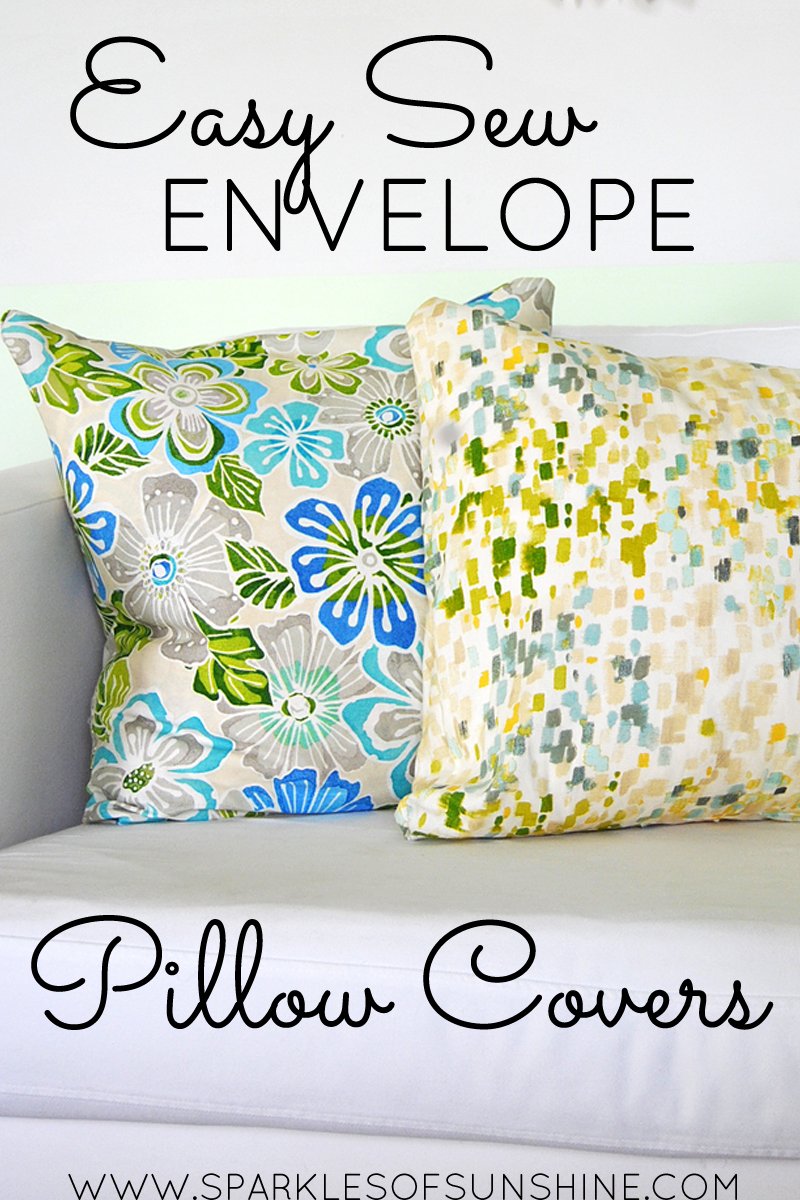How to make an envelope pillow cover, you will need to measure and cut the fabric, sew the hems, and then fold the fabric to create the back flap. This simple sewing project only requires about half a yard of fabric and offers various options for embellishment.
Making your own envelope pillow cover is a great way to add a new pop of color to your couch or bed. It’s a super simple sewing project and it only takes about a ½ yard of fabric. There are so many ways to embellish these envelope pillow covers.
Whether you want to add a touch of elegance with a sleek finish or a pop of personality with decorative elements, the options are endless. With just a few easy steps, you can create custom envelope pillow covers to perfectly complement your living space.
How to Make an Envelope Pillow Cover?

Supplies Needed
Making your own envelope pillow cover is a creative and budget-friendly way to refresh your home decor. With just a few supplies and some basic sewing skills, you can customize your living space with stylish and functional pillow covers. Before you begin, make sure you have the necessary supplies on hand to complete the project seamlessly.
Measuring Your Pillow Form
Before you start, measure your pillow form to determine the size of fabric you will need for the cover. Ensure the measurements are accurate to achieve a snug and polished fit.
Cutting The Fabric
Cut the fabric according to the measurements of your pillow form, allowing for seam allowances as required. Accuracy in cutting will ensure a professional finish for your envelope pillow cover.
Preventing Fabric From Fraying
To prevent fabric fraying, consider using a serger or overlocker to finish the raw edges. Alternatively, you can apply fabric glue or a zigzag stitch to the edges for a clean and durable result.
Ironing The Hems
Before sewing, it’s crucial to iron the hems to create crisp and straight folds. This will facilitate accurate and neat stitching, resulting in a polished final product.
Sewing The Pillow Cover
Making your own envelope pillow cover is a great way to add a new pop of color to your couch or bed. It’s a super simple sewing project and it only takes about a ½ yard of fabric. There are so many ways to embellish these envelope pillow covers.
Sewing The Hems
Start by folding and pressing the edges of the fabric to create a hem. Use a hot iron to ensure the hems are crisp and stay in place while sewing.
Creating The Back Flap
After sewing the hems, fold the fabric to create the back flap of the pillow cover. The back flap should overlap to allow easy insertion of the pillow form.
Sewing The Pillow Cover Seams
With the back flap in place, proceed to sew the pillow cover seams using a straight stitch on the sewing machine. Ensure to reinforce the seams at the beginning and end to prevent unraveling.
Finishing Touches
Learn how to make an envelope pillow cover with this easy sewing tutorial. Add a pop of color to your couch or bed with this simple project using only ½ yard of fabric. Customize your envelope pillow cover with various embellishments for a personalized touch.
After sewing the hems and seams of your envelope pillow cover, it’s time to add the finishing touches to complete the project. These final steps will ensure that your pillow cover looks polished and professional. Let’s dive into the details.
Turning The Pillow Cover Right Side Out
To start, carefully reach inside the pillow cover and locate the opening between the envelope flaps. Gently pull the fabric through the opening to turn the pillow cover right side out. Take your time to avoid any accidental tears or snags. Once the fabric is fully turned out, use your fingers to smooth out any wrinkles or creases for a neat appearance.
Inserting The Pillow Form
Now that your pillow cover is right side out, it’s time to insert the pillow form. Grab your pillow form and gently slide it into the cover through the envelope opening. Ensure that the corners of the pillow form are properly aligned with the corners of the cover for a snug fit.
Once the pillow form is inside, fluff it up and adjust it as needed to achieve the desired fullness. You’re almost done! With these finishing touches, your envelope pillow cover is now complete and ready to enhance the look of your furniture. Whether you choose to add decorative elements or keep it simple, this project is a fun and easy way to spruce up your home decor.
Enjoy your newly made envelope pillow cover! Remember, the right finishing touches can make all the difference, so take your time and pay attention to the details. With a little effort, you’ll have a professional-looking pillow cover that adds a stylish touch to any room. Happy sewing!
| Key Takeaways |
|---|
| Turning the pillow cover right side out is the final step before inserting the pillow form. |
| Be gentle when turning the fabric to avoid tears. |
| Smooth out any wrinkles or creases for a neat appearance. |
| Ensure the corners of the pillow form align with the corners of the cover. |
| Fluff and adjust the pillow form for the desired fullness. |
| Enjoy your newly made envelope pillow cover! |

Additional Tips And Variations
When it comes to making envelope pillow covers, there are several additional tips and variations that you can explore. These tips will not only enhance the appearance of your pillow covers but also extend their durability. Here are some ideas to consider:
Adding Flange To The Edge
If you want to give your envelope pillow cover a decorative touch, consider adding a flange to the edge. A flange is a decorative strip of fabric that is sewn along the edges of the pillow cover. It adds a pop of color and texture, making your pillow cover stand out. To add a flange, follow these steps:
- Measure and cut the main fabric for your pillow cover, leaving extra width for the flange.
- Cut the flange fabric, ensuring it is wide enough to extend beyond the edges of the main fabric.
- Sew the flange fabric onto the main fabric, aligning the raw edges.
- Once the flange is attached, continue with the rest of the steps to complete your envelope pillow cover.
Options For Finishing The Seams
When it comes to finishing the seams of your envelope pillow cover, you have a few options to choose from. The choice of seam finish will depend on your preferred look and the fabric you are working with. Here are some options to consider:
- Pinking Shears: If you want a quick and easy finish, you can use pinking shears to trim the raw edges of the fabric. This will prevent fraying and give your pillow cover a neat and finished appearance.
- Zig Zag Stitch: Another option is to use a zig zag stitch along the raw edges of the fabric. This stitch will secure the edges and prevent fraying. It works well for fabrics that tend to fray easily.
Making An Envelope Pillow Cover For A Long Pillow Form
If you have a long pillow form that you want to create a cover for, you can easily adapt the envelope pillow cover tutorial to fit your needs. Here’s how:
- Measure the length and width of your long pillow form.
- Cut the main fabric for your pillow cover, ensuring it is long enough to wrap around the pillow form with a slight overlap.
- Follow the steps in the envelope pillow cover tutorial, adjusting the measurements accordingly.
- Once you have sewn the seams and turned your pillow cover right side out, insert the long pillow form and enjoy your custom-made cover.
By following these additional tips and variations, you can create envelope pillow covers that are unique and personalized to your style. Whether you add a flange, choose a specific seam finish, or make a cover for a long pillow form, these tweaks will elevate your DIY project and make it truly one-of-a-kind.

Conclusion
Making your own envelope pillow cover is a simple and cost-effective way to update your home decor. With just a half-yard of fabric, you can create a new accent piece for your couch or bed. The best part is that there are endless possibilities for customization and embellishment.
Whether you’re a sewing novice or an experienced pro, this tutorial will guide you through the process with ease. So grab your supplies and get ready to transform your space with a homemade envelope pillow cover!

